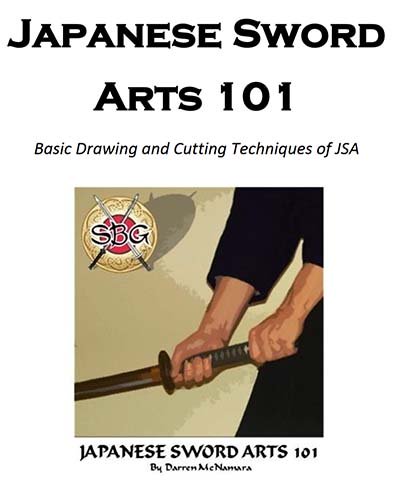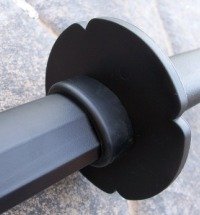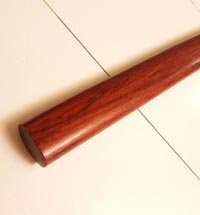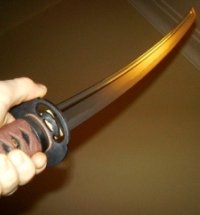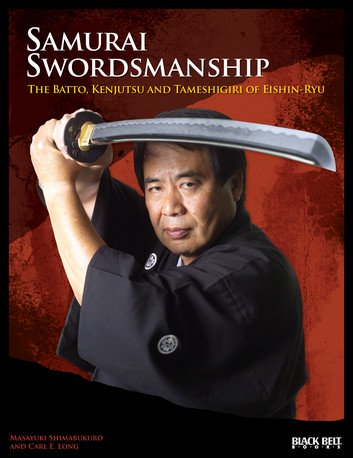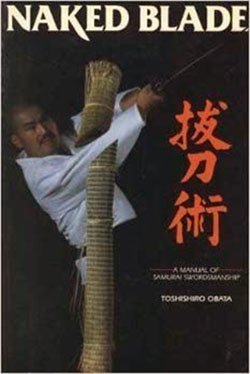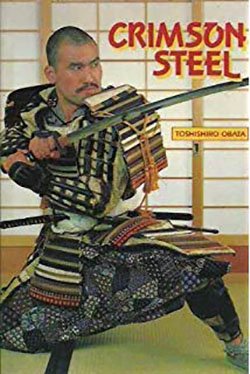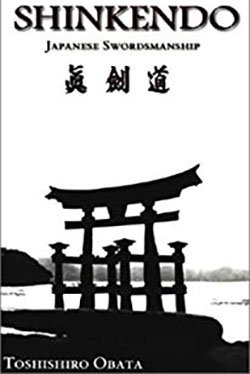Recent Articles
-
Christmas Sword Buying Guide 2025
Dec 03, 25 10:53 PM
Japanese Sword Fighting for Beginners
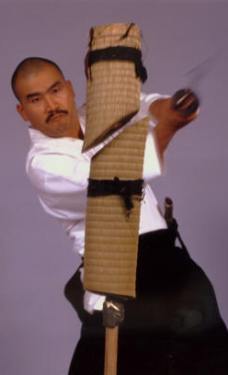 My Childhood Hero Toshishiro Obata
My Childhood Hero Toshishiro ObataJapanese Sword Fighting Schools, known colloquially in the sword community as JSA (Japanese Sword Arts) can be broadly categorized into Iaido, Kenjutsu and Kendo - though there is some overlap between these styles, and some modern schools, such as Shinkendo, that seek to bring them all back into one system...
Unlike Western Martial Arts, the Japanese Sword Arts are a living tradition that have been preserved more or less intact from generation to generation and date back to when the mastery of Japanese Sword Fighting techniques was a matter of life and death.
However, it is not just their practical aspects that make Japanese sword training so interesting. It is also the deeper aspects of the arts, designed to develop the swordman's spiritual and personal qualities , that have long fascinated the West.
While it is possible to learn some of the basic techniques without a teacher, generally it is not recommended - not only for obvious safety concerns, but also because self training can too easily result in an inflated sense of confidence and retard your ultimate development by picking up bad habits that can be hard to change.
But if you want a brief introduction, or are just a casual enthusiast, here you will find some solid basics to get you started.
Basic Concepts of Japanese Sword Fighting
The basic concept behind Japanese Sword Fighting, and indeed most Japanese martial arts in general, is the principle of one strike - one kill. That is to say, no wasted movement, total focus, and perfect timing to deliver a single, fight ending blow.
Unlike in Hollywood, where there are endless clashes of sword on sword, in real Japanese sword fighting, there is a lot of 'stalking' the opponent, sudden movement, advanced footwork and body angling, and very little blade on blade action..
The only fighting scene from the acclaimed movie 'Twilight Samurai' is considered to be many a very realistic example of what real Japanese Sword Fighting would have actually looked like..
For the most part, Samurai would attempt to side step or duck under an incoming attack rather than parry it. That said, when a parry was needed, it tended to be with the thick back of the blade (mune) rather than edge on edge, for if the two edges met with force, they would tend to bite into each other and lock the blades together.
How to Use a Samurai Sword
Of course, none of this really matters if you cannot execute a basic cut - and the basic cut of a Katana is a little different than most other swords.
While a Katana can and will cut if you just swing it like a baseball bat - it will not cut anywhere near as well as if you use the proper technique - the classic 'draw cut' which is more of a forceful slice than a chop or a cut.
Essentially, the technique involves a subtle inward movement of the elbows towards the body as the cut comes down and towards the target, drawing the surface of the blade across the target as it makes contact.
Luckily, the basic draw cutting technique is relatively easy to learn.
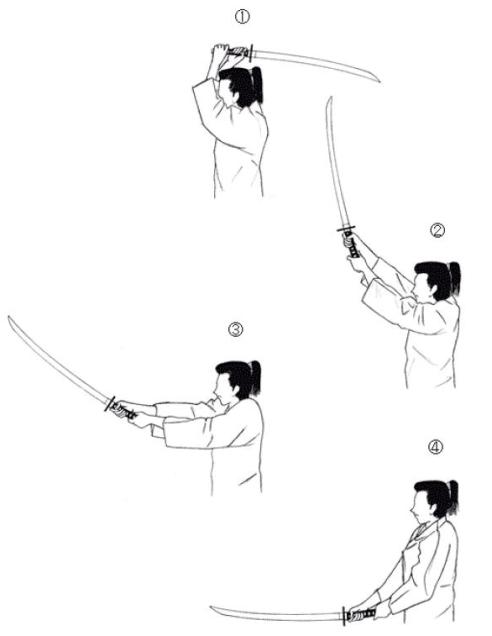
3 SECRETS OF JAPANESE SWORDSMANSHIP
For the three solid tips to DRAMATICALLY improve your cutting performance with a Japanese sword click here.
Aimed at the casual backyard cutter looking to cut well with their sword rather than for serious martial artists, but we all have to start somewhere..
Of course, with so many hundred years of tradition behind it, Japanese Sword Fighting has many formal aspects to it that are often neglected in the West. However, while at first glance these traditions may seem outdated and archaic, in truth they are all a part of the warriors training.
The ability to be able to focus ones attention at all times is critical in Japanese sword fighting, as is the ability to maintain ones composure in the face of sudden death, and all of these mental aspects are built into the training curriculum.
Take for example, Tameshigiri - or test cutting.
Many casual sword enthusiasts think that Tameshigiri is nothing more than cutting Tatami mats with a Katana, but it is anything but freestyle cutting. Each cut has meaning, developing flow from one technique to another and ensuring perfect edge alignment - and it too is highly ritualized.
VIDEO: Real Tameshigiri
If you want to know what to expect from a typical Japanese Sword Fighting School, learn some additional cutting techniques and get a sense for the training methods, etiquette and ceremonial aspects involved, click here for our article 'Japanese Sword Training Basics'.
Or go even deeper with our free eBook by Darren McNamara, Japanese Sword Arts 101
Equipment Needed
Each style and each dojo is quite different in their approach to the tools of the trade as it were - and the best advice I can give is that if you are serious about Japanese sword training, you ask your Sensei! That way you won't be going out and spending money on things you dont need, or won't be allowed to use...
That said, the following is a basic idea of what you will probably need - and a few recommendations...
Like with the Western Martial Arts, many (though certainly not all) schools start their students off with bokken or bokuto - in other words, a wooden sword.
These come in many different levels of qualit: from lignum vitae super bokken to US$85 Japanese white and red oak and hand crafted in the USA bokken by Samureye reviewed here, but generally speaking - it isn't necessary to spend anywhere near as much as this (the lignum vitae bokken are seriously overpriced really - if it is an almost indestructible, yet better balanced Bokken you are after, Cold Steel offer a very innovative and modern polypropylene version called the Cold Steel Highest Quality Bokken, a $29 training tool that compares well in terms of handling to much higher quality ones, and is extremely impact resistant - though not without its' weaknesses).
|
|
"Polypropylene bokken"
Cold Steel Price Range: $30 to $35 OVERVIEW: A modern, innovative training tool that is highly impact resistant and well balanced, but that is not without its weak points.. |
|
|
"Samureye Bokken"
Samureye Price Range: $229 OVERVIEW: Hand made from exotic hardwoods in the USA, Samureye.com have developed a solid reputation for crafting - they are expensive, but when only the best will do, these are the guys to go to.. |
Anyway, for most beginners - even a simple $10.00 hardwood bokken such as these ones are good enough to do the job.
After some time with a bokken, the student typically graduates to practicing with an iaito - or non sharpened Katana (though some schools skip the bokken entirely and go straight to the iaito).
Iaito come in many different types and price ranges. Those from Japan are made from an extremely light (but rather fragile and impossible to sharpen) aluminum alloy, primarily because Japanese law prohibits the mass production of steel swords...
The main problem with these blades is that they are much lighter than a real Katana, so there are also iaito manufactured and used outside of Japan that are made of real steel.
For the budget minded student, Cheness Cutlery offer some extremely popular non-sharpened iaito that have been accepted into many dojos across the world as a very good value for money piece such as the sub $200 Delux Non Sharpened Iaito (reviewed below).
|
|
"Delux iaito"
Cheness Cutlery Price Range: $189.99 OVERVIEW: Many iaito are made of light weight aluminum, and really don't handle anything like a real Katana. This one has the same weight and balance as the real thing. |
A very few schools only train with live blades, with most using them only when they have a specialized cutting session - which varies in frequency from school to school. Live Katana are reviewed elsewhere on SBG (if you haven't seen these reviews, click here).
The only other bit of equipment usually 'used' when Japanese sword training is the Dogi and Hakama uniform. These, and Kendo Bogu Armour, are readily available at several online sword sellers.
Further Resources
One of the best ways to learn Japanese sword fighting when you don't have access to a dojo is to learn via DVD - and the best DVD to learn from in my opinion is the 'Samurai Swordsmanship' series by the late great Shihan Masayuki Shimabukuro of the Eishin Ryu presented by Black Belt Magazine.
Not only do you get to see each action performed slowly and deliberately performed by the Master himself, but I have seen the results of some students who have diligently studied his videos using nothing but a mirror and a lot of hard work achieve quite remarkable results. Below is the official video preview by Black Belt Magazine showing one of the katas and how easy it is to follow his technique.
VIDEO: Official Preview of Samurai Swordsmanship Vol 1
There are several volumes in the series, and also a paperback by Shihan Shimabukuro called 'Flashing Steel' which is a great companion to the DVDs or a 'Sensei in a box' in its own right.
However, the books that I personally recommend the most and that were (and still are) treasured by me are those early books and the first of their kind by Shihan Toshishiro Obata of the Shinkendo Federation.
The first two books, Naked Blade and Crimson Steel detail the original Kata of the Toyama Ryu - and while the natural limitation of a book is that you cannot clearly see the transitions from one technique to another, the step by step photographs are easy to understand and hard to get completely wrong. The third book - Shinkendo - is perhaps the most popular however, but if you get one, you will certainly want to get them all as Shihan Obata is a true no-nonsense swordsman of true Samurai lineage who admits it himself that he was born in the wrong era..
I hope you found this information on Japanese Sword Fighting and training helpful. To return to Sword Fighting and Training Basics from Japanese Sword Fighting for Beginners , click here

Buying Swords Online Can Be DANGEROUS!
Find the Best Swords in the:
Popular & Recommended ARTICLES

The ONLY true free online magazine for sword enthusiasts. Delivered once a month on the 1st day of the month, no filler and no BS, just the latest sword news & info delivered straight to your inbox.

